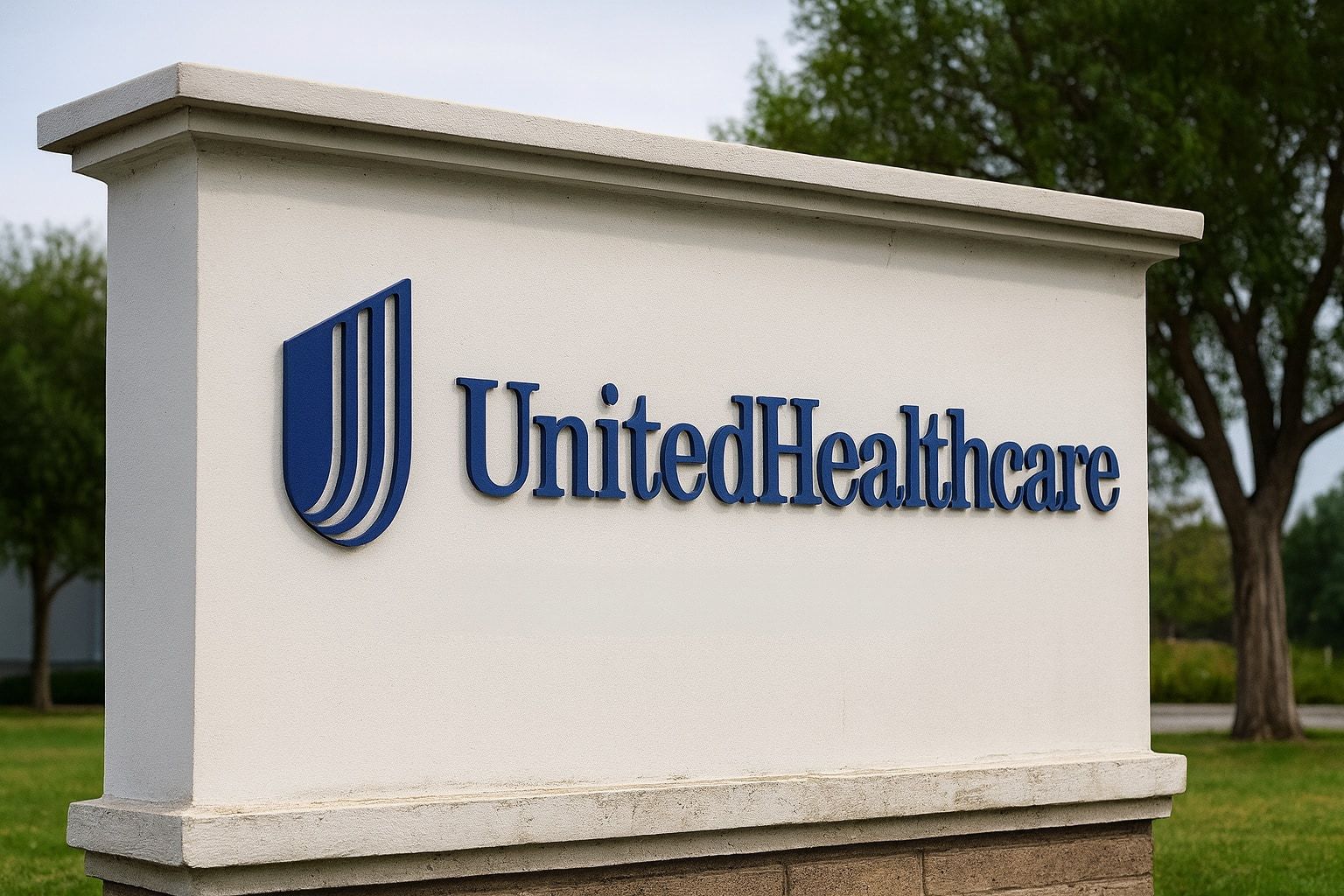- Strong Q3 performance: UnitedHealth (NYSE: UNH) reported Q3 revenue of $113.2 billion, up 12% year-over-year, and adjusted EPS of $2.92 [1].
- Raised earnings outlook: The company lifted its full-year 2025 adjusted EPS guide to at least $16.25 (from $16.00), topping the $16.20 consensus [2]. CEO Stephen Hemsley said results “reflect solid execution” toward its goal of “durable and accelerating growth in 2026 and beyond” [3].
- Strategy overhaul: UnitedHealth plans to shift its 90,000-doctor network toward more employed physicians and trim lower-profit markets [4] [5]. Its Optum Health unit is moving to a “narrower, more integrated provider model” after rapid expansion left networks “too large” [6] [7].
- Stock movement: UNH shares traded around $360 on Oct. 29 (down ~2% intraday) [8]. The stock is roughly 30% below its April 2025 peak [9] but has recovered about 10% from late-summer lows [10]. Market cap is about $333 billion [11].
- Analyst actions: Several firms recently raised price targets – e.g. KeyBanc to $400 and Bernstein to $433 [12]. Yet consensus is cautious: MarketBeat shows a “Hold” rating (avg. target ~$367) and 16 analysts “Buy” [13].
- Challenges persist: UnitedHealth faces sustained cost inflation (Q3 medical-loss ratio ~89.9% [14]) and a federal probe into Medicare Advantage billing [15]. CEO Hemsley acknowledged issues – in May, CEO Andrew Witty resigned amid these pressures [16] – and new CEO Stephen Hemsley noted 2025 is a transition year.
UnitedHealth’s recent earnings and strategic shifts have drawn close market attention. The company’s Q3 2025 results beat expectations, enabling a tighter outlook. Its revenue for Q3 rose 12% to $113.2 billion [17], with adjusted profit of $2.92 per share. That exceeded estimates and allowed management to raise full-year profit guidance. On Oct. 28, UnitedHealth said it now sees 2025 net EPS of at least $16.25 (from $16.00 prior) [18] – above the roughly $16.20 analysts had forecast. As portfolio manager Daniel Barasa of Gabelli Funds noted, “the results, the EPS guidance increase, and management commentary were all highly encouraging,” potentially signaling a return to UNH’s pattern of beats and upward revisions [19]. CEO Stephen Hemsley echoed confidence, saying the quarter’s execution positions the company for “durable and accelerating growth in 2026 and beyond” [20]. Hemsley even called 2026 a “stepping-off point” for UnitedHealth’s turnaround [21].
Importantly, UnitedHealth also reported that medical costs remain high. The Q3 medical care ratio was ~89.9% [22] [23] – far above the ~80% target typical in the industry. Management blamed rising claims in behavioral health, specialty drugs and home health for the elevated costs [24]. CFO Wayne Devedyt said the company will reduce clinics in its Optum Health network, a fast-growing segment that recently dragged on profits [25]. Nonetheless, Optum Rx (pharmacy) saw revenue jump 16% to $39.7 billion [26], offsetting some service weakness. Analysts estimate 2026 EPS will be about $17.6 [27], implying modest growth after this year’s challenges.
Strategic Shift: Narrowing the Doctor Network
UnitedHealth is reshaping its massive physician network to regain control and margins. STAT News reports the insurer will pivot its 90,000-physician enterprise toward more employed doctors (doctors on United’s payroll) instead of looser affiliations [28]. In practice, that means trimming the number of affiliated doctors and leaving some low-margin markets. Hemsley told investors on the earnings call that UnitedHealth “plans to… trim the number of doctors in its Optum Health network and pull out from some geographic markets” [29]. The goal is to focus on a smaller, more controllable network. As STAT noted, this will “allow the company to exert more control” over providers in ways that benefit UnitedHealth [30].
Optum Health CEO Dr. Patrick Conway admitted the network had grown too fast. He said Optum’s provider count “expanded significantly… and grew too large,” leading to inconsistent operations, especially with affiliated providers not aligned to Optum’s value-based model [31]. To fix this, UnitedHealth is doubling down on its value-based care vision but with fewer providers. Conway explained that Optum Health will shift “toward a narrower, more integrated provider model” – a reorientation expected to pay off in 2026 [32].
At the same time, UnitedHealthcare is pulling back on certain insurance markets. In mid-2025 it announced dropping over 100 Medicare Advantage plans covering roughly 600,000 members [33] [34]. Most of those are open-network PPO plans “in less managed products,” said UHC CEO Tim Noel. Noel noted seniors in these plans were visiting more doctors and ER, driving up outpatient spending [35]. “Considering the continued cost trend and funding pressures… we have made significant adjustments to benefits,” he said [36]. Similar exits are happening industry-wide: companies like Humana and CVS/Aetna are also trimming low-profit Medicare markets to offset CMS payment cuts and cost inflation [37].
UnitedHealth has also aggressively repriced its Affordable Care Act (ACA) exchange plans. Noel said UHC plans to raise ACA premiums by roughly 25% on average for 2026, in an effort to “establish a sustainable premium base” [38]. He expects enrollment on the exchanges to fall by about two-thirds due to these hikes [39]. These rate adjustments, Noel said, will help stabilize margins in the individual market – though Medicaid remains problematic, since many states have underfunded rates relative to member acuity [40]. As he warned, the “mismatch in rates and member acuity” in Medicaid plans will likely persist into 2026 [41].
Stock Reaction and Analyst Views
UnitedHealth’s stock has been volatile in 2025, but recent news has brought a relief rally. As of Oct. 29, UNH trades around $360 (down ~2% on the day) [42], after a 1.5-month rally lifted it from summer lows. TechStock² reports the stock surged about 2.2% on Oct. 20 to roughly $364 (just before earnings) [43]. Even after that jump, UNH remains about 30% below its year-to-date high (it briefly hit ~$630 in April 2025 [44]). Over the past week (mid-Oct), shares oscillated in the $350–$360 range [45]. The recent bounce – “more than 10% off its late-summer lows” – has given investors “cautious optimism that the worst might be over,” notes TechStock² [46].
Wall Street sentiment is mixed. According to MarketBeat, UNH has a consensus “Hold” rating with an average price target near $367 [47]. But a number of analysts have turned more bullish. In early October, KeyBanc raised its UNH target from $350 to $400 (with an “Overweight” rating) and Bernstein lifted its target to $433 (“Outperform”) [48]. These upgrades cite UnitedHealth’s strong market position and scale. Bernstein’s Lance Wilkes noted that UNH “remains one of the largest private health insurers with ~51 million members worldwide” [49]. Others emphasize the growth in Optum’s businesses and expanded membership. For context, UNH’s market cap is roughly $333 billion [50], making it the largest U.S. health insurer by revenue and enrollment.
Some analysts remain cautious due to the cost pressures. An analyst at Mizuho noted that even UNH’s October 2024 forecast ($30 EPS) was already below consensus, reflecting uncertainty around Medicare/Medicaid funding and utilization [51]. In July 2025, when UnitedHealth cut guidance into the mid-$10s, the message was clear: past projections had “underestimated surging utilization costs by roughly $6.5 billion” [52]. U.S. Senator Chuck Grassley has even probed UNH’s diagnostic coding practices for potential fraud [53], adding regulatory risk.
Despite headwinds, some believe a rebound is coming. CNBC and Motley Fool analyses (via Nasdaq) point out that federal rules (the ACA’s 85% medical loss ratio requirement) will allow insurers to raise premiums to offset costs, suggesting profits could recover by 2027 [54]. Michael Wiederhorn of Oppenheimer notes that with new management in place, UnitedHealth is “cleaning up the business” – early trends look to be heading in the right direction [55]. Daniel Barasa (Gabelli) agrees that the quarter’s “EPS guidance increase and management commentary” are very encouraging [56].
What’s Next for UnitedHealth?
After years of steady growth, 2025 has been tumultuous for UnitedHealth, but the company is taking aggressive steps to turn the corner. CEO Hemsley and his team have initiated cost cuts, network pruning, and price adjustments. The real test will be sustaining these actions and translating them into earnings. Analysts will closely watch UnitedHealth’s forthcoming guidance for 2026 (expected in January 2026) and the long-term targets thereafter. For now, investors have a high-stakes bet: if medical-cost inflation moderates and the restructured networks gain efficiency, UnitedHealth could resume its historical growth pattern. As Stat News summarized, UnitedHealth is “switching strategies in an effort to improve its financial performance” [57]. Whether that effort succeeds will determine if the recent stock rebound has legs – and how soon earnings might take off again.
Sources: UnitedHealth Q3 2025 earnings release and call transcripts [58] [59]; STAT News [60]; Fierce Healthcare [61] [62]; Reuters [63] [64]; TechStock² (ts2.tech) analyses [65] [66] [67]; LiveNOW Fox Health [68] [69]; Reuters Markets Data [70].
References
1. www.unitedhealthgroup.com, 2. www.reuters.com, 3. www.unitedhealthgroup.com, 4. www.statnews.com, 5. www.statnews.com, 6. www.fiercehealthcare.com, 7. www.fiercehealthcare.com, 8. www.reuters.com, 9. ts2.tech, 10. ts2.tech, 11. www.reuters.com, 12. ts2.tech, 13. ts2.tech, 14. www.reuters.com, 15. www.livenowfox.com, 16. www.livenowfox.com, 17. www.unitedhealthgroup.com, 18. www.reuters.com, 19. www.reuters.com, 20. www.unitedhealthgroup.com, 21. www.fiercehealthcare.com, 22. www.unitedhealthgroup.com, 23. www.reuters.com, 24. www.reuters.com, 25. www.reuters.com, 26. www.reuters.com, 27. www.reuters.com, 28. www.statnews.com, 29. www.statnews.com, 30. www.statnews.com, 31. www.fiercehealthcare.com, 32. www.fiercehealthcare.com, 33. ts2.tech, 34. www.livenowfox.com, 35. www.livenowfox.com, 36. www.livenowfox.com, 37. ts2.tech, 38. www.fiercehealthcare.com, 39. www.fiercehealthcare.com, 40. www.fiercehealthcare.com, 41. www.fiercehealthcare.com, 42. www.reuters.com, 43. ts2.tech, 44. ts2.tech, 45. ts2.tech, 46. ts2.tech, 47. ts2.tech, 48. ts2.tech, 49. ts2.tech, 50. www.reuters.com, 51. ts2.tech, 52. ts2.tech, 53. www.livenowfox.com, 54. ts2.tech, 55. www.reuters.com, 56. www.reuters.com, 57. www.statnews.com, 58. www.unitedhealthgroup.com, 59. www.fiercehealthcare.com, 60. www.statnews.com, 61. www.fiercehealthcare.com, 62. www.fiercehealthcare.com, 63. www.reuters.com, 64. www.reuters.com, 65. ts2.tech, 66. ts2.tech, 67. ts2.tech, 68. www.livenowfox.com, 69. www.livenowfox.com, 70. www.reuters.com







